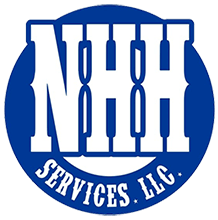Personal conveyance is the movement of a commercial motor vehicle (CMV) for personal use while off-duty. According to the Federal Motor Carrier Safety Administration (FMCSA), a driver may record time operating a CMV for personal conveyance as off-duty only when the driver is relieved from work and all responsibility for performing work by the motor carrier. 
There still are a lot of questions and confusion for some when it comes to personal conveyance.
The FMCSA published a list of proper use of personal conveyance and non-qualifying uses of a commercial vehicle for personal use as well as some personal conveyance FAQs to help.
Some of the examples listed for when operating a CMV is considered off-duty, include:
- Time spent traveling from a driver’s en route lodging (such as a motel or truck stop) to restaurants and entertainment facilities.
- Commuting between the driver’s terminal and his or her residence, between trailer-drop lots and the driver’s residence, and between work sites and his or her residence. In these scenarios, the commuting distance combined with the release from work and start to work times must allow the driver enough time to obtain the required restorative rest as to ensure the driver is not fatigued.
- Time spent traveling to a nearby, reasonable, safe location to obtain required rest after loading or unloading. The time driving under personal conveyance must allow the driver adequate time to obtain the required rest in accordance with minimum off-duty periods under 49 CFR 395.3(a)(1) (property-carrying vehicles) or 395.5(a) (passenger-carrying vehicles) before returning to on-duty driving, and the resting location must be the first such location reasonably available.
Some personal conveyance FAQs include:
May a driver, who drops his or her last load at a receiver’s facility use personal conveyance to return to their normal work location (i.e. home or terminal)? No. Returning home or to the terminal from a dispatched trip is a continuation of the trip, and therefore cannot be considered personal conveyance.
May a driver use personal conveyance when they run out of available (driving/on-duty) hours? No, except for the one exception described in the guidance where a driver who runs out of hours while at a shipper’s or receiver’s facility may drive from that facility to a nearby, safe location to park, provided that the driver allows adequate time to obtain rest in accordance with daily minimum off-duty periods under the Hours of Service rules before beginning to drive. Personal conveyance is those times where a driver
If a driver picks up the commercial motor vehicle from a repair facility once repairs are complete, would the driver be allowed to use personal conveyance to their residence from the repair shop? No, travel for repair and maintenance work is being done in the furtherance of the business and is considered on duty time.
Questions? Contact NHH Services
NHH Services’ Safety Team is ready to assist with driver education and training to ensure the company’s fleet is safe on the road and compliant with the latest laws, as well as up-to-date with road closures and construction. Contact us if you have any specific questions.
